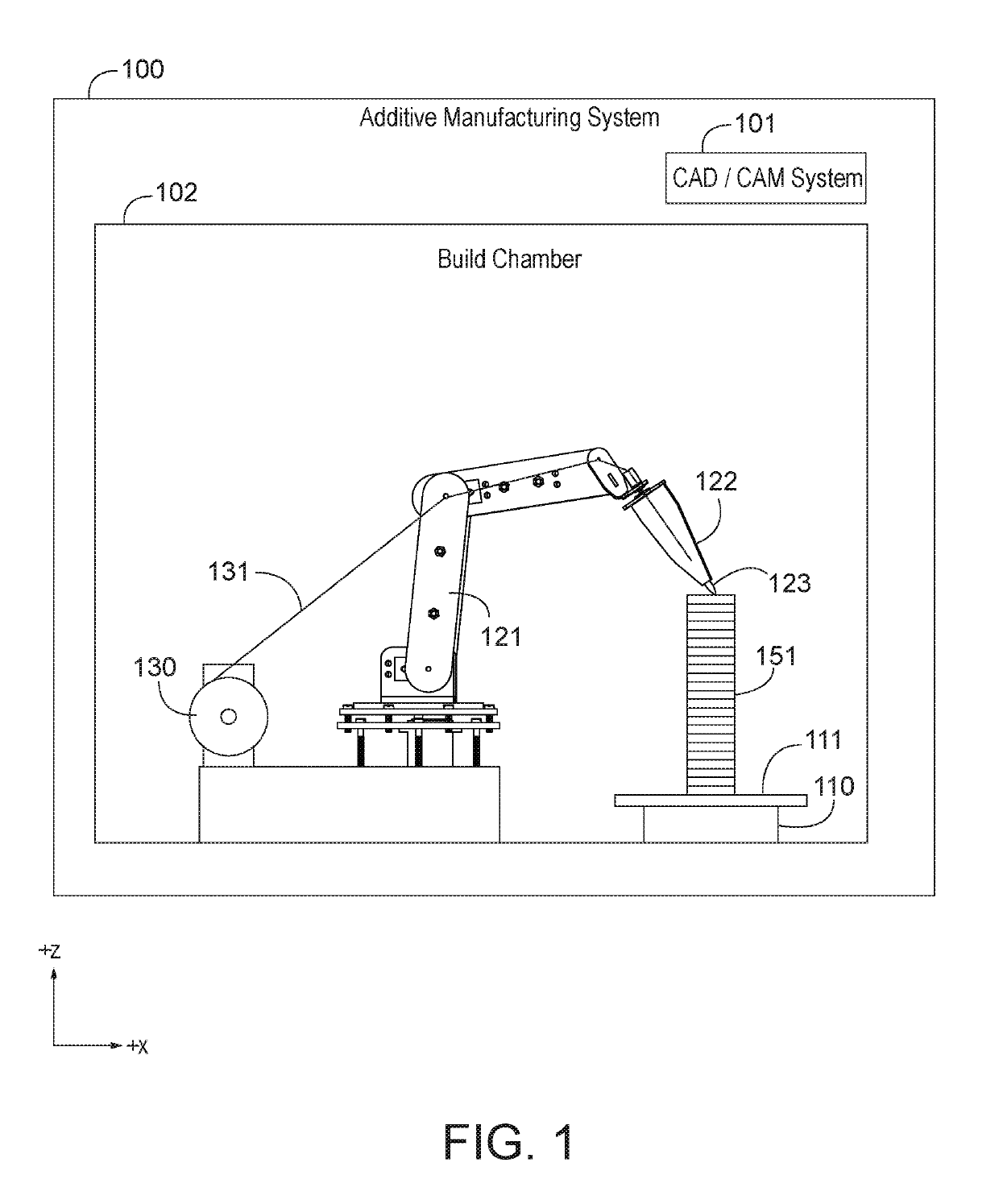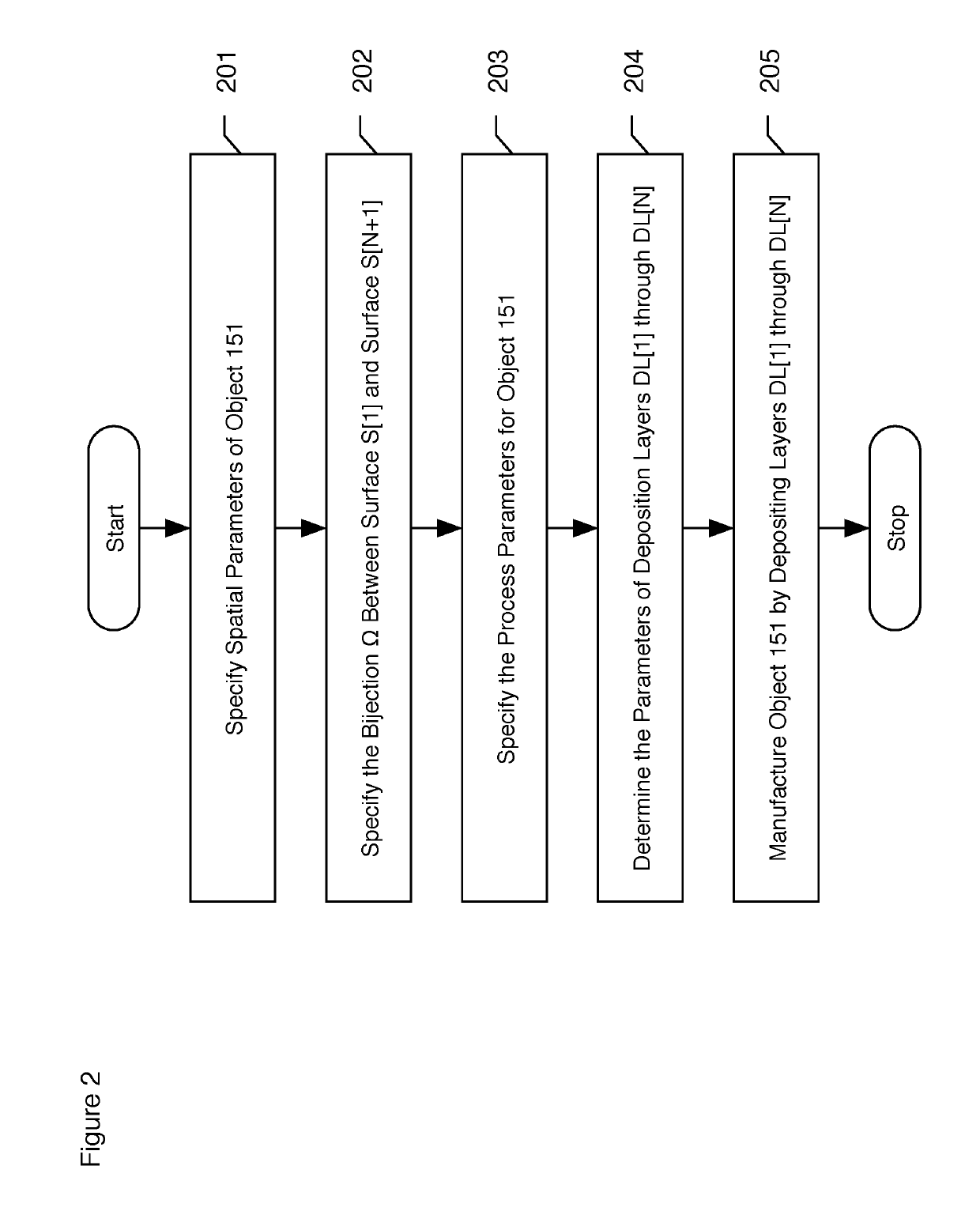Deposition of non-uniform non-overlapping curvilinear segments of anisotropic filament to form non-uniform layers
a curvilinear segment and anisotropic filament technology, applied in the field of additive manufacturing of three-dimensional objects, can solve the problems of not being able to deposit a run inside the surface of the surface, affecting the quality of the finished product, etc., and achieves the effect of cost and disadvantages of traditional additive manufacturing
- Summary
- Abstract
- Description
- Claims
- Application Information
AI Technical Summary
Benefits of technology
Problems solved by technology
Method used
Image
Examples
Embodiment Construction
[0039]For the purposes of this specification, the following terms and their inflected forms are defined as follows:[0040]The term “horizontal” is defined as parallel to the X-Y plane.[0041]The term “vertical is defined as normal to the X-Y plane.[0042]The term “height” is defined as the maximum vertical range.[0043]The term “top” is defined as the highest vertical extent.[0044]The term “bottom” is defined as the lowest vertical extent.[0045]The term “watertight” is defined as closed mathematical surface.
[0046]FIG. 1 depicts an illustration of the salient components of additive manufacturing system 100 in accordance with the illustrative embodiment of the present invention. Additive manufacturing system 100 comprises: CAD / CAM system 101, build chamber 102, turn-table 110, deposition platform 111, robotic arm 121 (which itself comprises deposition head 122 and deposition needle 123), thermoplastic filament spool 130, and thermoplastic filament 131. The purpose of manufacturing system ...
PUM
| Property | Measurement | Unit |
|---|---|---|
| thickness | aaaaa | aaaaa |
| thermoplastic | aaaaa | aaaaa |
| melting point | aaaaa | aaaaa |
Abstract
Description
Claims
Application Information
 Login to View More
Login to View More - R&D
- Intellectual Property
- Life Sciences
- Materials
- Tech Scout
- Unparalleled Data Quality
- Higher Quality Content
- 60% Fewer Hallucinations
Browse by: Latest US Patents, China's latest patents, Technical Efficacy Thesaurus, Application Domain, Technology Topic, Popular Technical Reports.
© 2025 PatSnap. All rights reserved.Legal|Privacy policy|Modern Slavery Act Transparency Statement|Sitemap|About US| Contact US: help@patsnap.com



